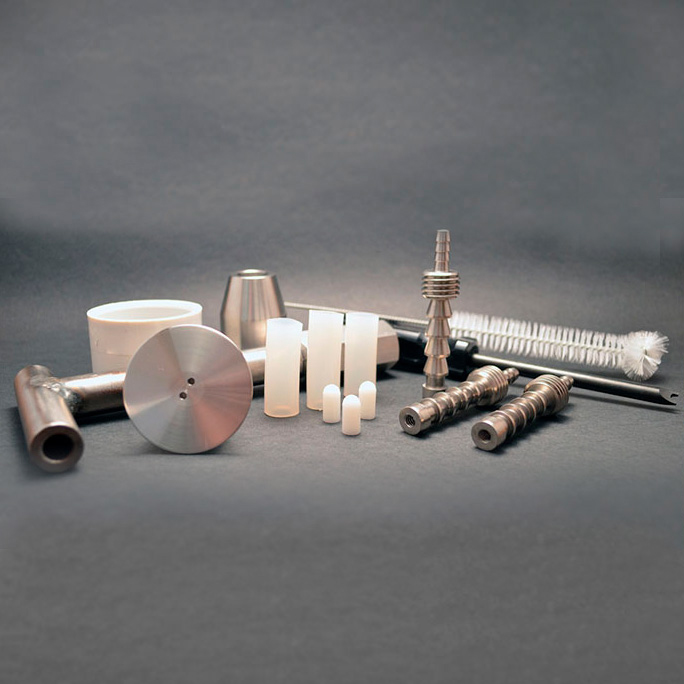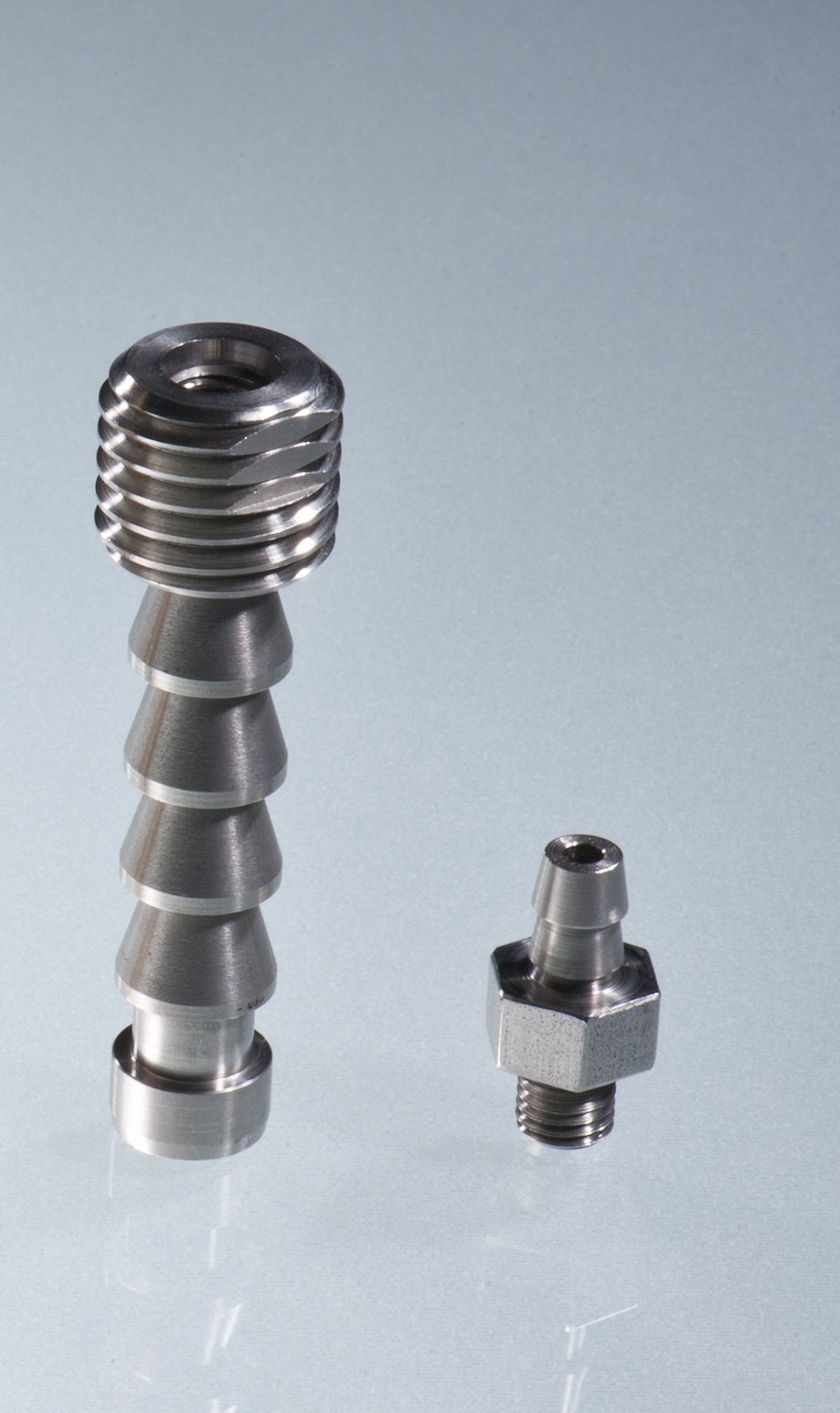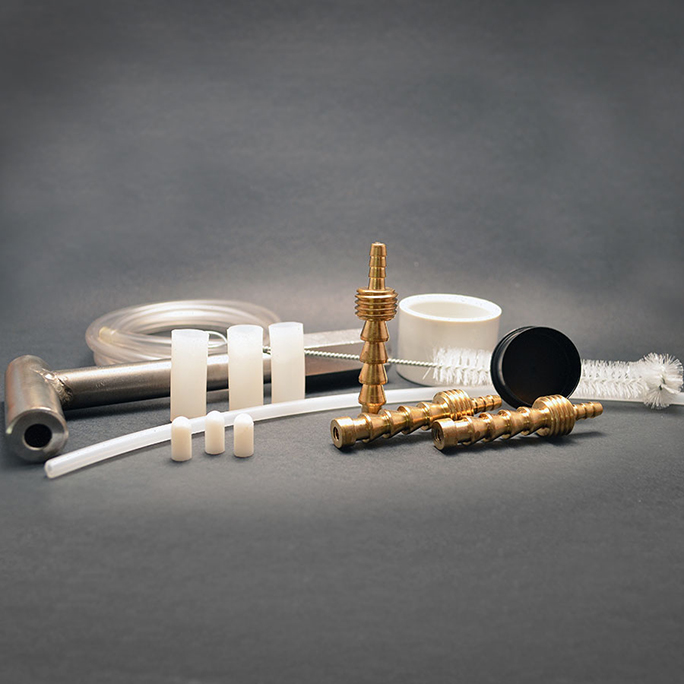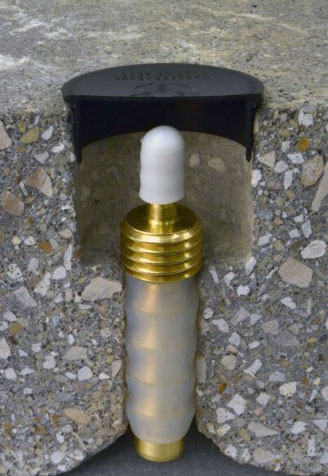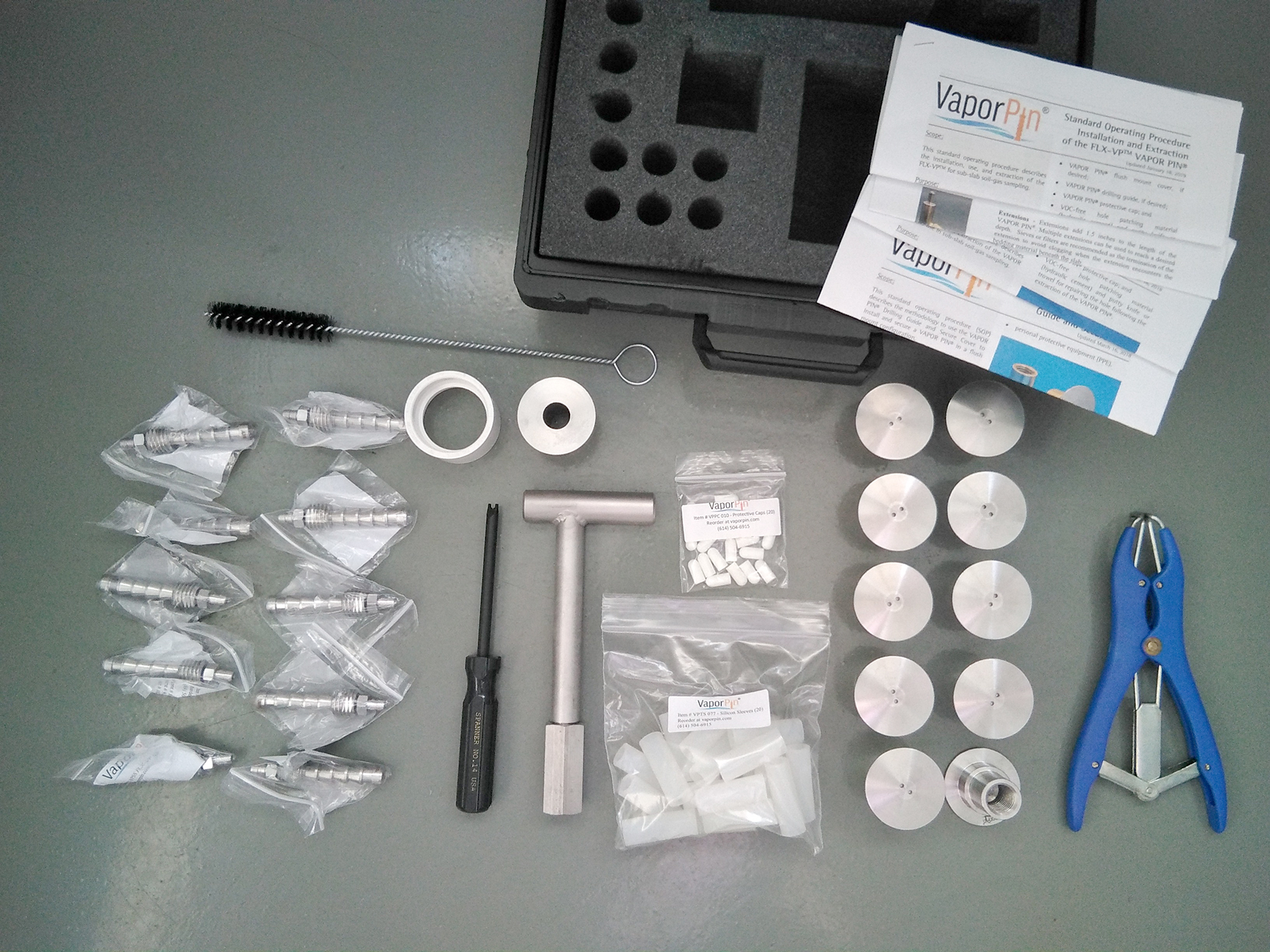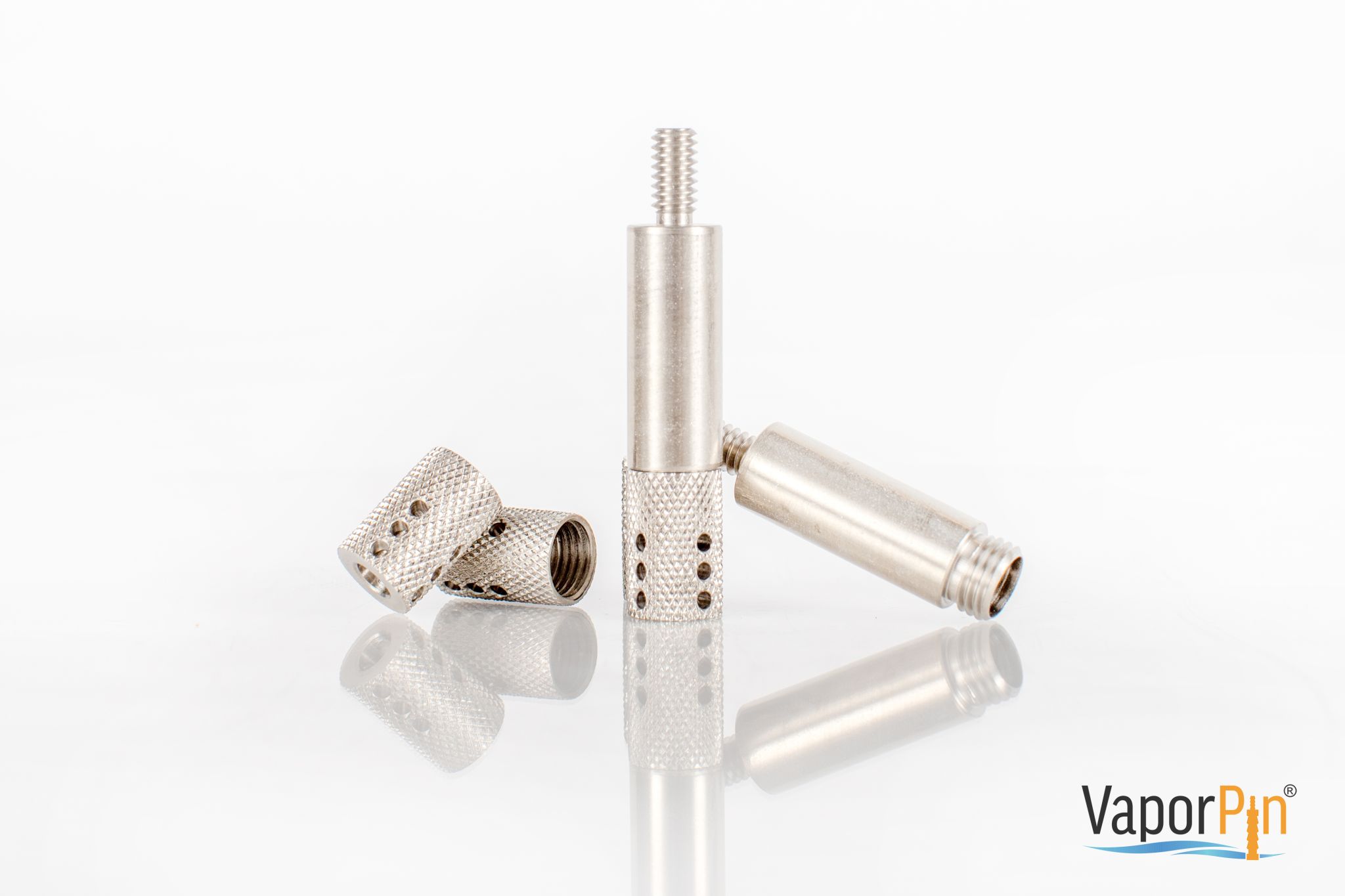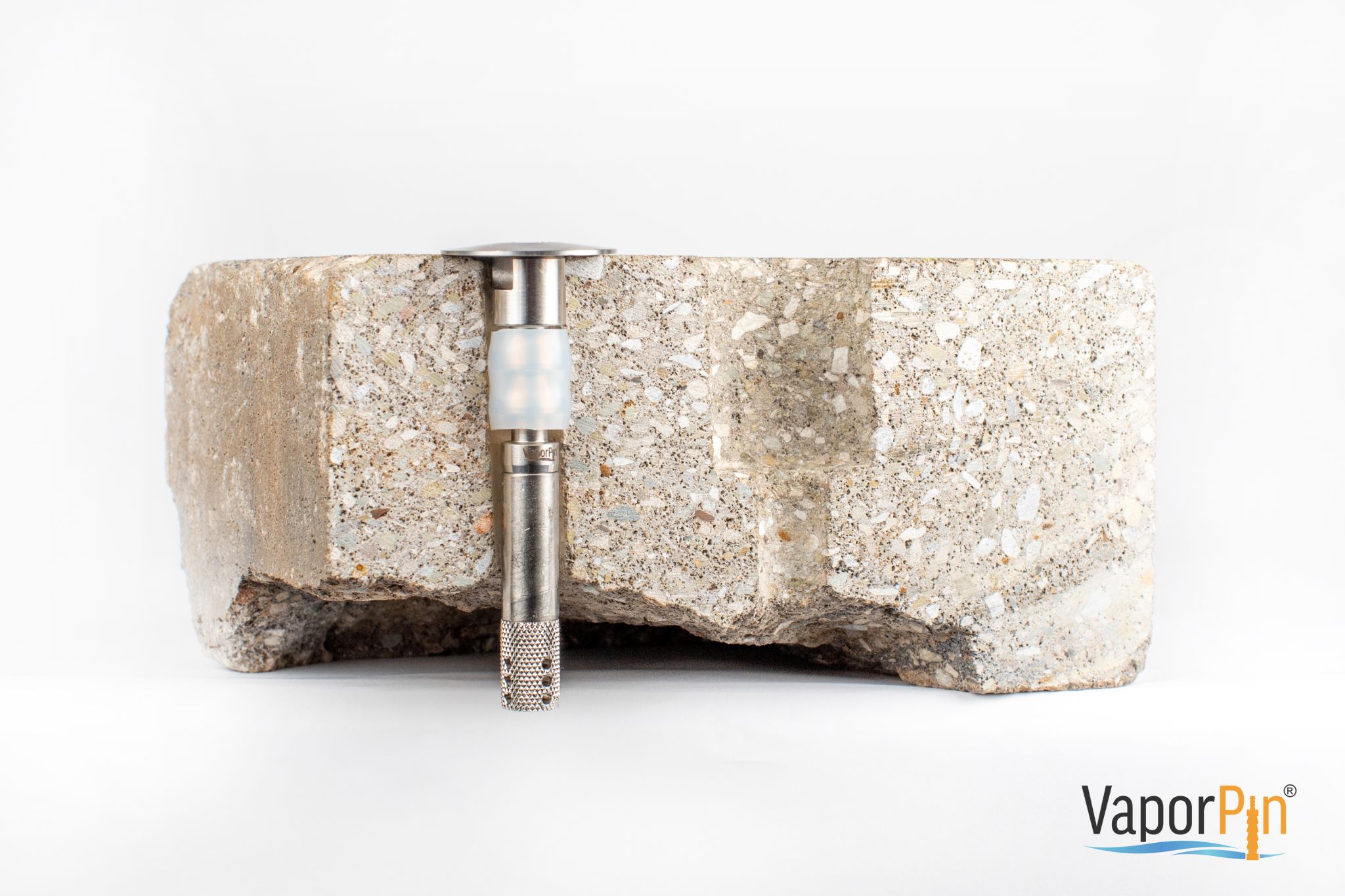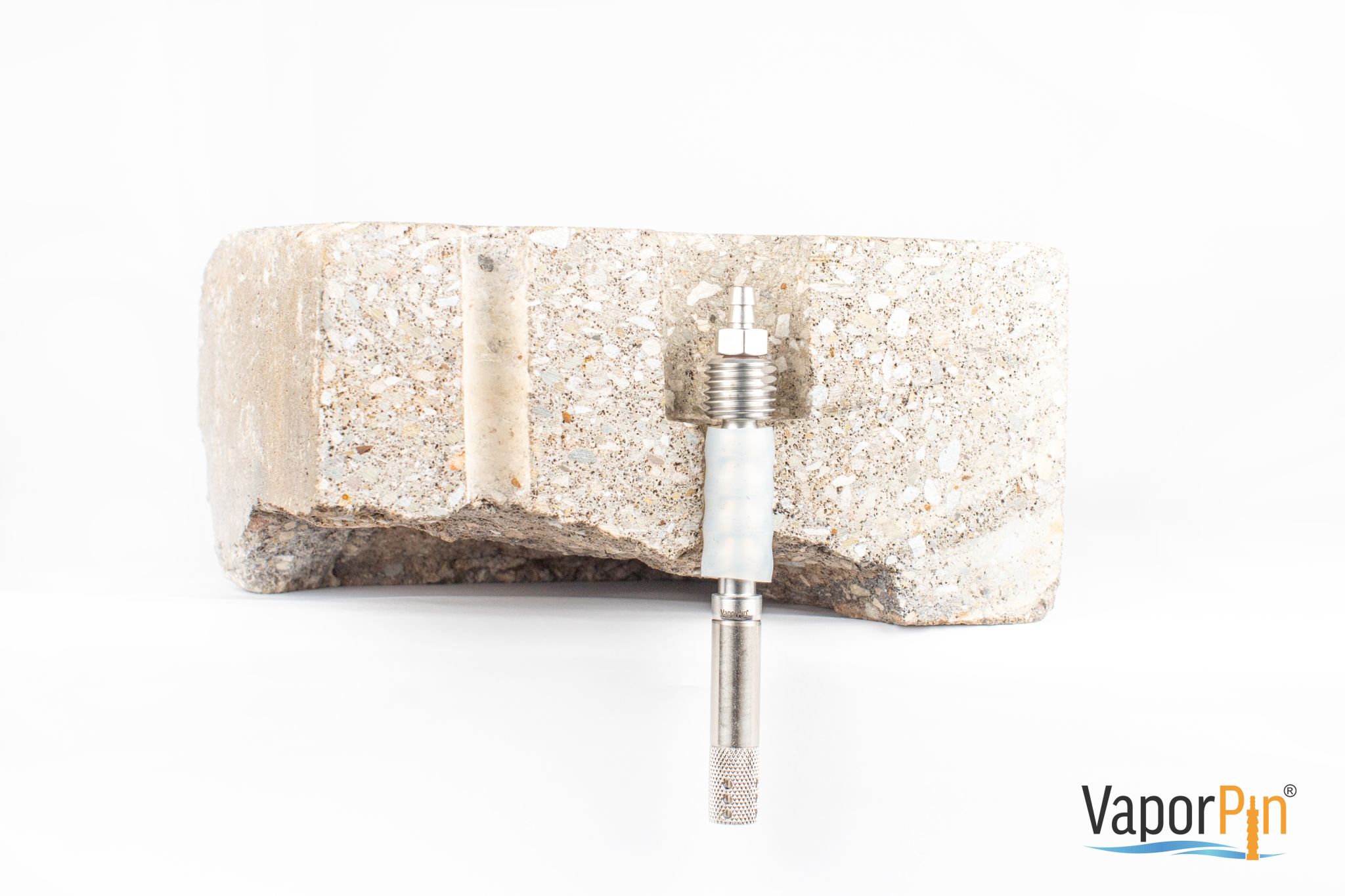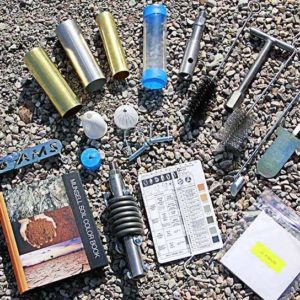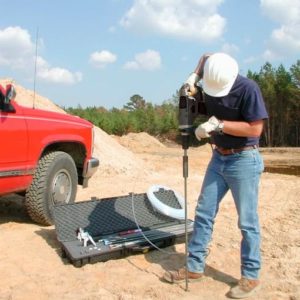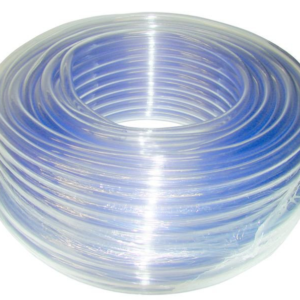Description
The Vapor Pin system has a wide range of applications including:
- Sub-slab (under-slab) gas sampling
- Depressurisation studies and testing
- Waste gas evaluations
- Characterisation of study areas and remediation, both in pilot testing and monitoring work.
Consists of kits presenting all-in-one solutions.
- Stainless steel
- FLX-VP Stainless Steel
Title
Vapour Intrusion Sampling
VaporPin® – A simple and innovative solution in soil vapour sampling equipment:
VaporPin® is a patented, simple-to-use device for detecting soil vapour intrusion. Reusable and versatile, this device is one of the most innovative tools for soil vapour sampling, which has made very positive strides in being quick and easy to install for environmental consultants, drillers and companies conducting vapour and mitigation system testing and sampling.
Vapour intrusion assessment
Using Vapor Pin® for Vapor Intrusion Assessments:
Vapor Pin® has several applications, but was developed specifically to collect subsurface vapors for vapor intrusion assessments. The vapour from the soil directly below the floor of a building – subfloor vapours – poses the greatest health risk because it is the closest to air in an enclosed environment. Unlike air in enclosed environments, subfloor vapour is generally not influenced by indoor or outdoor sources. Subfloor vapours are more representative of indoor conditions than deeper vapours and are easier to collect using hand-held, portable equipment.
Caracterización de las emisiones de COVS
Vapor Pin® es ideal para localizar de manera rápida y eficiente las fuentes de contaminación de compuestos orgánicos volátiles (COV) debajo del pavimento de manera rápida y eficiente, para que se pueda enfocar los esfuerzos en la remediación y la mitigación ambiental, ahorrando a nuestros clientes tiempo y dinero.
Nuestra experiencia ha encontrado que la mayoría de los sitios contienen concentraciones de contaminantes además de los contaminantes asociados con tanques subterráneos y áreas de desengrase. La existencia de un área contaminada puede generar numerosos problemas, como daños a la salud, calidad comprometida del agua, restricciones en el uso de la tierra y daños al medio ambiente.
Characterisation of VOC emissions
Vapor Pin® is ideal for quickly and efficiently locating sources of volatile organic compound (VOC) contamination beneath pavement so that remediation and environmental mitigation efforts can be focused, saving our clients time and money.
Our experience has found that most sites contain concentrations of contaminants in addition to the contaminants associated with underground tanks and degreasing areas. The existence of a contaminated area can lead to numerous problems such as health damage, compromised water quality, land use restrictions and environmental damage.
Using Vaporpin for pressure testing
The Pressure Field Extension or Pressure Floor Underfloor Testing (PFE) ensures that a sublab depressurisation system creates sufficient vacuum everywhere below the floor. This pressure test, called PFE (Pressure Field Extension) is always recommended prior to the installation of any mitigation system. From the pressure test, a suitable system is developed to reverse partial damage and eliminate health risk situations. The tool is also used for periodic testing, which allows checking whether the sublab depressurisation continues to operate within the specified limits.
A better approach to PFE is to measure the sublab vacuum through the Vapor Pin®, as this will provide a tight seal against the concrete and prevent intrusion of sub-slab gases into the internal air.
Vapor Pin® can be left in place indefinitely for subsequent measurements or removed and reused elsewhere. For radon testing, for example, Vapor Pin® can be reused by simply cutting and replacing the silicone sleeve between the holes, but it is important that Vapor Pin® is decontaminated before reuse in a different location.
For the performance of the “PFE” during the pilot test, the Vapor Pin® can be installed in the “Stick-up” configuration, which requires a single 1.58 cm diameter hole to be drilled into the concrete. If the Vapor Pin® is left in place for further testing, it is normally installed in the flush-mount configuration, so that it does not pose a risk where machinery and people pass through. The flush-mount Vapor Pin® can be covered with the stainless steel Vapor Pin® protective cap, which reduces the risk of tampering, or with a black plastic flush-mount cap, which is more economical. We recommend the use of Vapor Pin® for pilot testing, and for permanent wells for subsequent testing.
Installation service in Spain and Portugal
Title
- Reduces damage to the slab (first centimetres of soil).
- Improved diagnostic tests.
- Better spatial resolution.
- Quick and common connections to sampling equipment.
- Easy installation, sample processing and collection for reuse.
- Eliminates the need for cement slurry, increasing productivity.
- Reduces sampling time, allowing more samples to be acquired at lower cost, in turn improving understanding of site conditions.
- Unique patented design reduces the potential risk of leakage and improves sample quality.
Extracción
Instalación y herramientas
Instalación de tapas de seguridad
Introducción usos Vapor Pin
1- Why is the Vapor Pin® better than other existing methods for subsurface vapour sampling?
Vapor Pin® is superior to other subsurface vapour sampling methods because:
1) it consists of a single piece of metal, eliminating potential leak points;
2) installs in minutes using common tools;
3) it uses a silicone sleeve to form a watertight seal between the Vapor Pin® and the borehole, eliminating the need for mortar or other adhesives; and
4) Unlike other sampling devices, it is easily retrieved for reuse.
2- What do I need to install a Vapor Pin®?
Vapor Pin® is easily installed with common hand tools. We recommend purchasing the Vapor Pin® Contractor’s Kit, which includes everything needed for 10 Vapor Pin® installations. The only tools required (other than the Vapor Pin® Kit) are a hammer drill, appropriate drills and a rubber hammer. Refer to the Vapor Pin® Standard Operating Procedure for details. Grout or other adhesives are NOT required.
3- What exactly is included in the Vapor Pin® Kit?
Vapor Pin® kits are available in four variations.
The Standard Vapor Pin® Kit contains the following items, conveniently housed in a rigid carrying case: 10 Vapor Pins® (brass or stainless steel); 20 silicone sleeves; 20 Vapor Pin® caps; 10 plastic flush mount caps; 1 installation/removal tool; 1 brush; 1 water barrier for leak testing; and 1 Vapor Pin® Standard Operating Procedure.
The Contractor Kit contains the same equipment as the Standard Kit, plus 1 stainless steel drill guide, 10 flush-mount protective covers (instead of 10 plastic covers) and 1 screwdriver for installing and removing the protective covers. The Contractor’s Kit offers more protection against damage or tampering than the Standard Kit, but both can be used for flush or bonded mount installations.
We recommend that a Vapor Pin® Contractor Kit be purchased initially to ensure that all necessary components are obtained. Individual components of the kit can also be purchased as required. The sampling tube is also available separately. The Elastrator tool is also available separately, which simplifies the process of placing the silicone sleeves on the Vapor Pin® prior to installation.
4- Can Vapor Pin® be used to sample all VOCs?
Vapor Pin® is a means of transmitting soil vapours through the slab so that samples can be taken. The specific set of VOCs to be measured depends on the analytical method used by your laboratory.
5- Can Vapor Pin® be installed as a flush mount?
Yes, the Vapor Pin® was developed to be installed in a bonded or flush mount configuration. We recommend that the Vapor Pin® be installed in the bonded configuration if it is used for a single sampling event and then removed and in the recessed configuration if it is to be kept in the same location for repeated sampling. Flush mount plastic caps are provided with the Vapor Pin® kit, but stainless steel protective caps are also available to provide added protection against damage or tampering. The Standard Operating Procedure (SOP) for using the Vapor Pin® drill guide and protective cap describes the flush mount installation procedure. As described in the SOP, the optional drill guide simplifies the flush mount installation and improves the accuracy of hole depth and location.
6- Can Vapor Pin® be used for vapour intrusion sampling?
Vapor Pin® was developed for vapour intrusion surveys as well as source delineation. We suggest that the guidance guide be consulted for proper leak detection procedures, soil vapour flow rates, appropriate sampling vessels and the appropriate duration of the sampling period. Vapor Pin® should be left in place if multiple sampling cycles are required. Several states allow the use of Vapor Pin® for vapor intrusion sampling, but we recommend that you consult your local environmental regulations.
7- Is there an easier way to install the silicone sleeve on the Vapor Pin®?
We recommend screwing the Vapor Pin® onto the installation tool and pushing the sleeve over the lower end of the Vapor Pin®. The optional Elastrator tool facilitates this process: by placing the ends of the Elastrator on the tip of the silicone sleeve, you squeeze the handle of the tool to open the sleeve while pushing it against the Vapor Pin®. We polish the Vapor Pins® prior to shipment to reduce sharp edges, but protective gloves should still be worn when installing the sleeve.
8- How long does it take to install Vapor Pin®?
Vapor Pin® can be installed in the bonding configuration in less than 5 minutes. Installation in the flush mount configuration requires an additional two to three minutes.
9- What type of drill does Vapor Pin Enterprises, Inc. use during the installation of VAPOR PIN®?
They use an impact drill manufactured by Hilti (TE 50 Deluxe Grounded Combihammer, item #383916), with TE-YX 1.6 cm x 55.88 cm (item #206514) and TE-YX 3.81 x 58.42 cm (item #293032) drill bits. Similar drills are also available from other manufacturers.
Doubts about measurements: use 16 mm for the Vapor Pin® and 38 mm for the caps, we suggest 400 mm cutting length for both sizes.
10- How long does it take after installation to test a VAPOR PIN®?
Since VAPOR PIN® does not require the use of mortar, sampling can be done once the subfloor vapour has reached equilibrium. The time period can be prescribed by specific standards, but can be as little as 20 minutes after installation as VAPOR PIN® installations result in short hole opening times.
11- What type of piping do I need for soil vapour sampling?
In theory, stainless steel is better because it has less reactivity (i.e. it is less likely to absorb or release vapours), but flexible plastic tubing is easier to handle, more accessible and completely satisfactory if proper precautions are taken. In general, more flexible tubing is more reactive than more rigid tubing. Semi-rigid nylon and Teflon tubes are most widely recommended for soil vapour sampling, but others may also be acceptable, depending on applicable standards. Most or all Summa-type containers, and many other sample containers and accessories, are designed to accept 0.635 cm OD. Vapor Pin Enterprises, Inc. offers 0.635 cm of Nylaflow LM, which has superior chemical resistance to generic nylon tubing and is less expensive than Teflon. The chemical reactivity of polyethylene tubing makes it unsuitable for vapor intrusion sampling, but it may be suitable for high concentration vapors near sources of contamination. All plastic tubing should be replaced between samples, and stored and handled away from vapour sources. Hoses, such as Tygon™, are recommended only for making connections between semi-rigid tubing and other devices, as described below.
12- How do I connect a sampling tube to VAPOR PIN® and other equipment?
Tygon tubing makes the connection between VAPOR PIN® and Nylaflow. Most Summa-type vessels and regulators are equipped with Swagelok™ compression joints that connect to 0.635 cm OD tubing, including Nylaflow, with Swagelok™ fittings and a hex nut. The nut can be reused, but not the ferrules, except on stainless steel tubing. Several laboratories offer Swagelok™ terminals that fit sample containers for a low cost.
Because the VAPOR PIN® is designed to be rugged and compatible with other sampling equipment, it has a nominal 0.635 cm spigot connector at the top. Like other pin fittings, it is slightly larger than 0.635 cm in diameter, so the VAPOR PIN® is attached to rigid tubing, e.g. Nylaflow, with a small portion of malleable tubing. Vapor Pin Enterprises, Inc. offers Tygon™ R-3063 tubing to make these connections. Tygon™ offers better chemical resistance than other malleable tubing, but is flexible enough to make an airtight seal. Tygon™ tubing is placed between the VAPOR PIN® and the rigid tubing and fits over both. Pressure gauges, tees and other devices with a 0.635 cm connection can be connected to the Tygon™ tubing sampling connection. The sampling connection can also be mounted with compression fittings if desired, but the additional terminals required at each connection add time and cost to sampling. In addition, in our experience, spigot fittings are less likely to leak than compression fittings, especially under negative pressure. In fact, the 2004 Missouri Steam Intrusion Guide discourages the use of compression fittings at all points except the sample vessel because of the tendency to leak.
Tygon™ has better chemical resistance than soft tubing, such as silicone tubing, but the high flexibility of silicone allows devices of different diameters to be connected. Silicone can also be penetrated with a hypodermic syringe for some types of sampling, after which the orifice is automatically sealed. As with all environmental samples, your equipment must comply with current quality procedures.
Note that chemical interference from pipelines depends on many factors, but pipelines are more likely to contribute hydrocarbons than chlorinated compounds. To minimise the risk of chemical interference from all piping, shorten the length of piping as much as possible, particularly in malleable piping, and keep piping away from sources of vapour during storage and transport.
13- How much vapour should be removed from VAPOR PIN® prior to sampling?
Applicable quality standards should specify the specific number of purge volumes, but two or three volumes are usually recommended. For VAPOR PIN®, a purge volume is equal to: 0.83 millilitres (ml) for VAPOR PIN® plus 5 ml per 2.55 cm of hole below VAPOR PIN®, plus 0.42 ml per 2.55 cm of tubing (if using 0.635 cm Nylaflow LM), plus the internal volume of any other connections or equipment at the sampling connection.
If it is desired to calculate the purge volume based on equipment dimensions, the VAPOR PIN® has a total length of 8.25 cm, of which 5.08 cm is inside the 1.6 cm hole in the subfloor, and 5.8 cm is above the 1.6 cm hole. The internal diameter (ID) of the Vapor Pin® is 0.47 cm. Nylaflow LM tubes have an outside diameter (OD) of 0.63 cm and an ID of 0.47 cm. Tygon™ tubes have an OD of 0.8 cm and an ID of 0.47 cm. Remember that as Tygon™ tubing expands with use, it should be used in short lengths to minimize contact with soil vapors, and its ID will not be part of the purge volume calculation.
Vapor Pin Enterprises, Inc. prefers to purge soil vapors with a combination photoionization detector (PID) and oxygen (O2) meter, and collect the sample after stabilization of PID and O2 levels, indicating the presence of vapors in the soil. VOC and O2 generally stabilise after purging 50 to 100 ml of soil vapours, which generally equates to about three volumes of purge, depending on the thickness of the floor and length of pipe.
14- Why did my Vapor Pin® fail a helium leak test?
We cannot rule out leakage, but it is rare for Vapor Pins®, and if helium has been detected at several points in the sample, this could be caused by false positives from methane. Most helium detectors respond positively to methane. Similarly, high concentrations of C5-C12 hydrocarbons in soil vapours have been reported to cause false positives in helium detectors. Methane generation is common when oxygen is depleted by high concentrations or large sources of hydrocarbons, especially in petroleum products containing ethanol. This is one of the reasons VAPOR PIN® encourages leak testing by mechanical means, as described in our Mechanical Leak Testing SOP (located on our Resources page), and as explained in the ‘Interstate Technology and Regulatory Council’ (ITRC), 2014 Petroleum Vapor Intrusion Guide. If a helium leak detector is used, we recommend using a non-methane model that tests soil vapors for false positives prior to helium application.
15- Does VAPORPIN® create a watertight seal against concrete?
Under normal circumstances, with proper installation through a concrete slab, VAPOR PIN® creates a watertight seal. Vapor Pin Enterprises, Inc. has tested VAPOR PIN® for helium leaks; with 99% helium in the leak test layer, no helium (<50 ppm) was detected in the subfloor vapours. In some situations, such as a thin concrete floor, or a cracked and damaged concrete floor, or a hole larger than 1.6 cm in diameter, may result in an insufficient seal. We recommend leak testing as part of the sampling procedure.
16- How do I leak test the VAPOR PIN®?
As with all vapor intrusion sampling, you must follow current standard quality procedures. Vapor Pin Enterprises, Inc. prefers to leak test the subsurface sampling well (VAPOR PIN®) with distilled water and the rest of the sampling equipment (vessels, tubing and fittings) under vacuum as described in the Standard Operating Procedure: Vapor Leak Testing by Mechanical Means. VAPOR PIN® can also be tested for leaks via helium or other tracer gases, as in other subsurface sampling devices.
17- Will the silicone tubing around VAPORPIN® affect my sample?
We use peroxide-cured silicone tubing (silicone sleeves), which is used to form a seal for VAPOR PIN®. Our studies indicate that the tubing does not affect the sample results. The tubing surrounds the lower half of the pin that forms the seal between the 1.6 cm hole and the VAPOR PIN®. Subsurface vapours are little exposed to the silicone tubing. Comparisons with conventional sampling points indicate that the silicone sleeve does not add soil vapours. In addition, Vapor Pin Enterprises, Inc. screens the silicone tubing upon arrival to ensure that sleeves with high VOC levels are not shipped to customers.
18- Can VAPORPIN® be reused after extraction?
Yes, VAPOR PIN® is designed to be reused after removal from the slab. Vapor Pin Enterprises, Inc. has used some VAPOR PINs® at least twelve times with no obvious signs of wear. The sleeve and protective cap should be replaced when installed in different locations, and the VAPOR PIN® should be properly decontaminated in accordance with the Standard Operating Procedure.
19 – How is VAPOR PIN® decontaminated between installations?
Decontamination of the VAPOR PIN® is described in the Standard Installation Procedure and consists of removing and discarding the silicone sleeve and protective cap, cleaning the VAPOR PIN® in an Alconox or equivalent solution, rinsing it thoroughly and heating it to a temperature of 130°C.
20- Can I leave a VAPOR PIN® installed between sampling events?
Yes, VAPOR PIN® can remain in place for as long as necessary. For repeated use, we recommend a permanent flush mount installation using a stainless steel VAPOR PIN® to protect the PIN against damage and corrosion. Remember that the flush mount cover is not water resistant and should not remain in place in areas subject to contaminant leakage. If future sampling is not required, VAPOR PIN® should be removed and the hole in the floor filled with hydraulic cement.
21- Will VAPOR PIN® leak vapours into the building if left in place?
If installed correctly with its protective cover, there will be no vapour leakage into the building structure through VAPOR PIN®. In our experience and that of our customers, VAPOR PIN® is less likely to leak than other devices.
22- Will VAPOR PIN® cause damage to the floor?
Installation of VAPOR PIN® will result in a 3.81 cm diameter hole (permanent flush mount installation) or a 1.6 cm hole (temporary adhesive installation). After removing VAPOR PIN®, the hole must be filled with hydraulic cement. Therefore, there must be no damage to the floor. VAPOR PIN® is a very effective method that will not do more damage than other sub-slab sampling methods.
23- Can VAPOR PIN® be used on slabs of any thickness?
VAPOR PIN® is designed for use on slabs with a thickness of at least three inches (7.62 cm). If VAPOR PIN® is installed as a flush mount, we suggest that the slab be at least four inches thick. Although it is important to reach the underside of the slab, VAPOR PIN® does not need to be the length of the slab as long as your drill is long enough to drill down to the sub-floor. A 1.6 cm drill with a length of 61 cm covers most situations. If you want VAPOR PIN® to reach the underside of the slab, there are extensions that have been created for this function. Therefore, there is no maximum thickness for the slab.
24- Is there any product similar to VAPOR PIN®?
We are not aware of any other device that is exactly like the patented Vapor Pin®. There are other types of subsoil vapour sampling devices installed in concrete, and some professionals have built their own version from plumbing parts. However, the cost of locating parts, problems with leaks and the fact that once installed they cannot be reused, make them more expensive in the long run. We believe that VAPOR PIN® will become the new standard for subsurface steam sampling because it is easy, quick to install and use, reusable and provides quality samples with little or no leakage.
25- Should I buy bronze or stainless steel VAPOR PIN®?
In Latin America and Europe, only stainless steel products are sold. Bronze VAPOR PIN® is typically used for temporary installations (one-time sampling) and stainless steel for long-term installations (periodic sampling) due to its higher corrosion resistance. Stainless steel VAPOR PIN® has a longer service life than bronze PINs, so you will save money in the long run because the product is reusable.
26- Is there any way to connect a piece of pipe, filter or other accessory to the end of the VAPOR PIN®?
VAPOR PIN® is manufactured with a female thread on the lower end specifically for attaching an adapter that has a double connection (male thread / spigot). The male thread, which threads onto the VAPOR PIN and the spigot connection (barbed extension) allows a pipe to be attached to increase the depth of monitoring wells, add a filter or strainer to allow air to enter laterally to avoid clogging when sampling under the slab. The spigot adapter (barbed extension) has the same thread size as the Vapor Pin®, allowing the use of the same tubing (Nylaflow and Tygon).
In addition, the depth of monitoring wells can be increased with the 3.8 cm extension by threading to the bottom of the VAPOR PIN®. The extension has male threads on the top and female threads on the bottom, allowing you to attach them together to reach the desired depth.
27- What are the dimensions to install VAPOR PIN®?
Use 16 mm for the Pin and 38 mm for the caps, we suggest a cutting length of 400 mm for both sizes.
28- Is it possible to connect Vapor Pin® to Swagelok connections?
FLX-VP was specifically designed to connect to a variety of other devices, including Swagelok compression fittings. The standard Swagelok fitting for 0.635 cm (0.635 in.) Nylaflow and Teflon tubing and TO-17 absorption tubing is available on our website at (part number SL_FLX1_Fitting). Connecting sealing ferrules are also available for purchase.
29- Contamination of soil gases Siloxane
First, certain specific procedures may exist in your region. Generally speaking…
Silicone pipes are more reactive than more rigid pipes, i.e. silicone and more flexible pipes are generally more prone to absorb and release organic compound vapours. “2004 Soil Steam Sampling and Analysis – Lessons Learned, DOE / PERF Soil Steam Workshop, Brea, CA, January 27-29,” by Greg Ouellette, is one of several reports demonstrating the greater reactivity of hoses, these are out of context for our application. Ouellette removed vapours through 50 feet of Tygon hose, which had approximately 216 square inches in contact with soil vapours. In the case of Vapor Pin®, the only contact between the flexible tubing (silicone) and the soil vapours is the cross-sectional area between the floor and the bottom of the PIN, which is 0.28 cm2. Although the silicone absorbs some VOCs, the tubing would reach equilibrium at some point and stop absorbing vapours.
We tested the silicone tubing upon receipt by drawing ambient air along its 15.24 m length with a photoionisation detector. The tube may contain vapour indices in the first few days, specifically siloxanes, which are not on any vapour intrusion list. We continue testing for several days until the entire length of the tube contributes less than 1 ppm VOC. We then cut the tubes into small segments and let the venting continue before using them.
There are some relatively rare problems, such as what type of helium to use during leak testing, or when using compression fittings or nipple fittings, when most problems are reduced to a few problems:
- Perform a shut-in test on the canister and regulator union as described in ASTM D7663-11 before going to the field. Leak test the sample stream assembled at the site, except for the connection to the Vapor Pin®, or equivalent point, with a portable or peristaltic vacuum pump. Finally, connect the sample train to the subsurface point and test for leakage at the point. Helium works, but we use distilled water. In certain cases, you will find leaks, but we have never seen this with VAPOR PIN®. We also check the flow rate of the regulator before the shut-off test. An inadequate flow rate is more likely to result in no sample than an invalid sample. We develop our own techniques if you are interested. In addition to applying our techniques, submitting documentation of your test results to the laboratory will enhance your credibility. Even the best laboratories occasionally provide faulty equipment.
- Minimise the length of the hoses by pushing the stiffer pipe or device against each other as closely as possible. In our opinion, compression fittings are more likely to leak without further leakage.
- Avoid laboratories inexperienced in this process as much as possible.
- Collect an appropriate number of samples to assess spatial heterogeneity. This may be the most important part. At least when working near sources, we have often found that the main source was not where we expected it to be, and our best guess would have provided concentrations vastly below the maximum. The only solution is to drill many holes, which is practical with VAPOR PIN®. It has installed 56 and up to 90 in one day. In many cases, you can evaluate them with a PID and collect some samples for analysis in the laboratory.
See our documents under the (videos) tab for additional information, especially the Michigan DEQ case where four Vapor Pin® were installed near their “conventional” subsoil points (Swagelok fittings set in concrete). They had been using a variety of laboratories, sample containers and analysis methods for months. However, we were successful in comparing Vapor Pin® with the conventional points. The second paper was done in conjunction with H&P Laboratories in San Diego. Their subsurface points, as described in the guide, are small monitoring wells filled with sand blocks and screens. They collected 10 pairs of samples and again the correlation is excellent. Despite all the problems related to the silicone sleeves and Tygon used to make connections, and other problems that had not been addressed, the fact is that the same results have been achieved over a wide range of concentrations and compounds, proving that the Vapor Pins® work spectacularly.
30- What are the delivery options for the product?
For delivery dates, please contact the Technical Sales Department on + 34 872 080 542 or by email envirotecnics@envirotecnics.com.
Vapor Pin Capsules
The innovative integration of the WMSTM (the passive permeation sampler for time-weighted average concentration measurement of VOCs) and Vapor Pin® samplers (the versatile sampling device used to facilitate the collection of soil gas samples and pressure measurements beneath any hard service or engineered vapor intrusion barriers) creates a powerful and versatile solution designed to revolutionize environmental monitoring, site characterization, and gas evaluation processes.
Key Features and Advantages
- Time-Weighted Average Concentration Measurement – WMSTM-VP allows for precise and continuous monitoring of VOC concentrations over extended periods. This feature ensures that you obtain comprehensive data regarding VOC levels, enabling a deeper understanding of contaminant behaviors and trends.
- Versatile – Switch between active and passive sampling through a single WMSTM-VP sampling device.
- User Friendly – The user-friendly system of WMSTM-VP simplifies the setup and deployment process, allowing for easy operation even by non-specialists.
- Discrete Design – The product can incorporate the Vapor Pin® sampling device with a stainless-steel cover, concealing the sampling device in the sub-slab and providing a sleek and seamless outward appearance.

